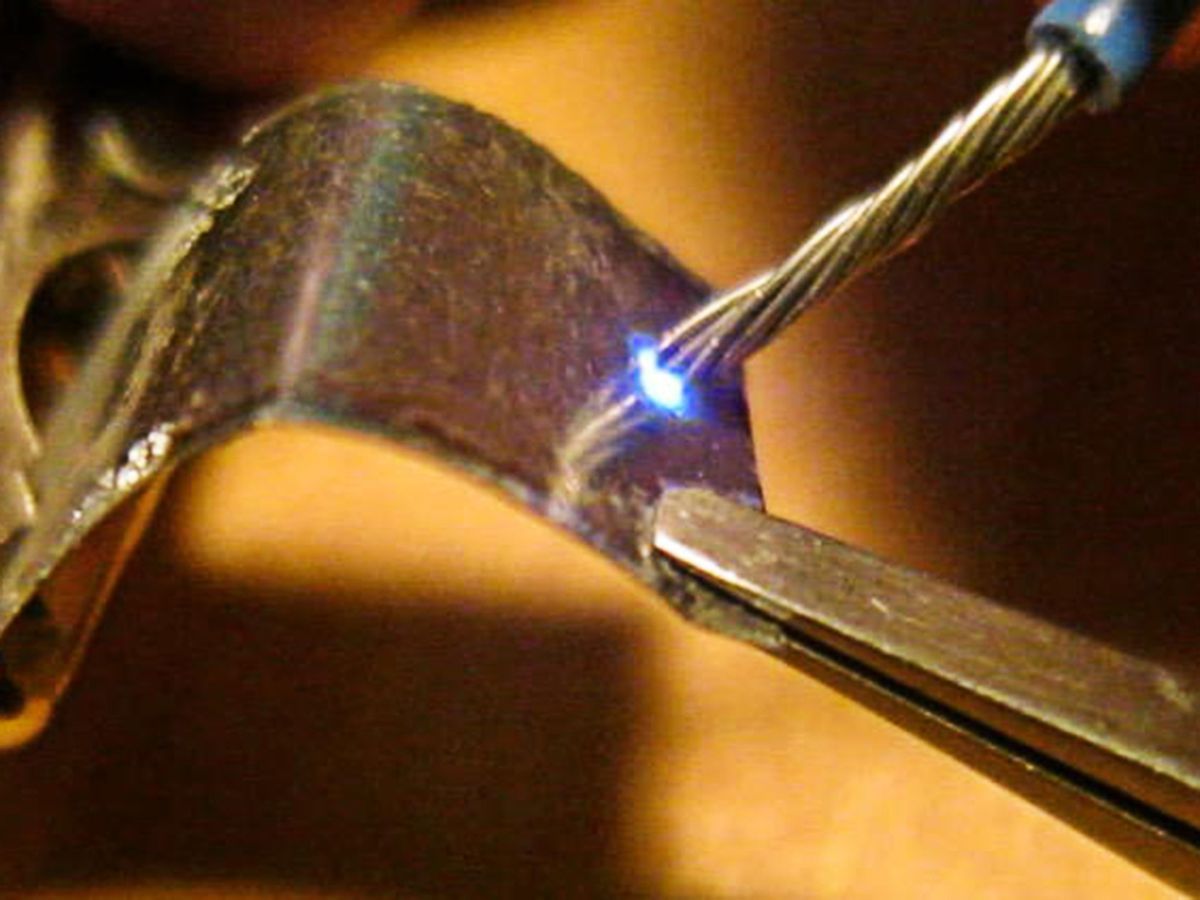MicroLEDs appear to be, forgive the pun, the bright future of displays. Made of micrometer-scale gallium-nitride LEDs, the technology offers an unmatchable ratio of brightness to power consumption.
The problem is that the most easily manufacturable ones are so small they’re suitable only for augmented reality and similar applications. Making bigger ones, like for a watch display or a smartphone screen, requires the near-perfect transfer of tens of thousands of individual microLEDs per second onto a prefabricated silicon backplane. It’s a very difficult proposition, but Apple and some startups are trying to tackle it.
If New Mexico-based startup iBeam is correct, even larger microLED displays could be produced quickly and cheaply on flexible substrates. “iBeam is a new paradigm in manufacturing for microLEDs,” says Julian Osinski, the startup’s vice president of product technology. “We have a way of growing microLEDs directly on a roll of metal foil, and that’s something nobody else can do.”
iBeam’s technology is adapted from the superconductor manufacturing industry where something similar has produced product by the kilometer. Founder and CEO Vladimir Matias is a superconductor manufacturing veteran and saw its potential in producing gallium-nitride devices.
LEDs and other gallium-nitride devices are usually grown atop a silicon or sapphire wafer by a process called epitaxy. For that to work, you need a single crystal, preferably with a similar crystal structure, for the gallium nitride to grow on. The iBeam process can produce that crystal-like substrate on an otherwise amorphous or polycrystalline surface such as metal or glass.

When you deposit material on an amorphous substrate you normally get a film of randomly oriented grains of crystal, explains Matias. But briefly blasting that film with ions from just the right angle gets all the grains to line up. iBeam chooses the film’s material so that the aligned grains match well with gallium nitride’s crystal structure. From there, they grow layers of gallium nitride using standard techniques and fashion them into microLEDs. Quantum dots will then be added to convert the color of some of the microLEDs from their natural blue to red and green.
Just as is done with superconductors, the procedure could be rapidly done in a roll-to-roll fashion, Osinski says. Today’s industry processes produce gallium nitride for about US $2 to $3 per square centimeter. “We’d like to take it down to 10 cents [per square centimeter] or less so it becomes competitive with OLEDs,” he says.
The company has used its existing process to produce microLEDs, and last month it announced the production of high-electron mobility transistors (HEMTs), as well. If the HEMTs could be constructed along with the microLEDs, they could form the circuitry that controls the microLED pixels.
(Kei May Lau’s team at Hong Kong University of Science and Technology developed a structure that integrates the HEMT and microLED so tightly that they effectively become one device.)
The startup’s near-term goal is to produce a small prototype display, which Osinki thinks may take until the end of next year. They hope to have large-scale manufacturing nailed down by 2022. That’s later than some microLED firms are planning to commercialize their products, but iBeam is counting on being able to produce much larger displays and at much lower cost. The company plans to sell its manufacturing process and materials to established display makers rather than become a manufacturer itself.
Samuel K. Moore is the senior editor at IEEE Spectrum in charge of semiconductors coverage. An IEEE member, he has a bachelor's degree in biomedical engineering from Brown University and a master's degree in journalism from New York University.



